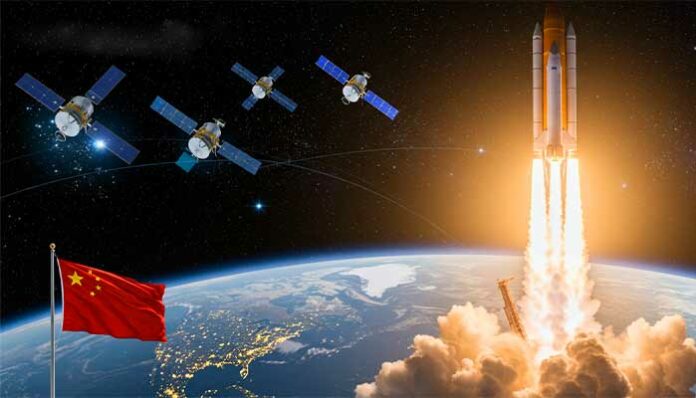In July 2023, Beijing’s LandSpace made a world-first by successfully launching a rocket powered by methane and liquid oxygen. This achievement put them a step ahead of American companies trying to reach the same goal.
On Saturday, China’s LandSpace moved a step forward in space technology by launching a Chinas New Rocket powered by methane. The rocket successfully carried six satellites into orbit. The company sees methane as a cleaner and more affordable fuel, which it hopes will support its goal of making rockets that can be reused in the future.
At 12:12 p.m. on Saturday, China’s New Rocket Zhuque-2E Y2 rocket took off from the Jiuquan Satellite Launch Center, located in the northwest part of the country. According to the company, this was the fifth successful flight in the Zhuque-2 rocket series, showing their steady progress in space launches.
In July 2023, Beijing’s space company LandSpace made history by becoming the first to launch a rocket powered by methane and liquid oxygen. This big step placed them ahead of famous US companies like SpaceX and Blue Origin, marking a proud moment for China’s growing space industry.
Why Methane and What’s New?
Recently, methane has caught a lot of attention as a rocket fuel. It’s better for the environment, safer to use, and cheaper than traditional hydrocarbon fuels. On top of that, methane suits rockets designed for multiple launches, a key feature of Chinas New Rocket design.
To keep up with China’s booming space industry, LandSpace has increased the payload capacity of its rocket. This change reflects the rising race to develop satellite networks that might challenge Musk’s Starlink service.
While the first methane-powered rocket launch didn’t have any real satellites on board, the second flight in December 2023 successfully carried three satellites into space.
Last Saturday, a rocket launched six satellites into space. Most of these satellites were developed by Spacety. A Chinese company officially known as Tianyi Space Science and Technology Research Institute, based in Changsha. This launch was a proud moment for Chinas New Rocket program.
Just before the launch, Li Xiaoming, the vice-president of the institute, appeared live on LandSpace’s stream. He explained that the rocket was loaded with several satellites: one radar satellite, two multispectral satellites. Three others meant for scientific research. The weights of these satellites ranged from as light as 20 kilograms to as heavy as 300 kilograms (44 to 660 pounds).
Next-Gen Reusable Rocket Technology
Li said that the three research satellites will be important for helping China explore deep space. Meanwhile, the two multispectral satellites will focus on watching the environment and finding mineral resources.
He said the radar satellite can watch the Earth in any kind of weather. It takes pictures both day and night and can see right through clouds and rain without any problem. This advanced technology is a highlight of China’s New Rocket capabilities.
Li explained that the radar satellite is incredibly accurate, able to detect small shifts in the ground as tiny as a few millimeters. This accuracy helps in closely monitoring urban areas, roads, and energy networks.
In January 2023, the US Treasury Department placed sanctions on Spacety, accusing the company of providing radar satellite data to a Russian firm.
According to the US, the Wagner mercenary group used this data to back their military actions in Ukraine.
Rejecting the claims, Spacety stated it has no business relationship with the entities listed by the Treasury. They highlighted that their offerings are solely intended for civilian and commercial applications.
SpaceX led the way with reusable rockets, showing they can greatly reduce the cost of sending spacecraft into space. Zhang Changwu. The founder and CEO of LandSpace, said his company has begun building their own reusable rockets and plans to test one in the second half of 2025.
With technical enhancements, the company built the newest Zhuque-2 rocket to advance its plan for a successful reusable rocket launch.
During Saturday’s launch, LandSpace introduced a propulsion system that cools both liquid oxygen and methane to temperatures lower than their boiling points, increasing the rocket’s power. A major feature of China’s New Rocket technology.
The Chinese space industry opened up to private investment in 2014, leading to rapid growth in commercial space firms. Among the earliest and most well-supported was Land Space.
Land Space started in 2015 and has since attracted money from several investors. These include Hong Shan. A venture capital firm that used to be called Sequoia Capital China. The investment branch of Country Garden. A big property developer in China. The government-backed China SME Development Fund.
A government-supported fund for advanced manufacturing provided Land Space with 900 million yuan (about $120 million) last December, according to Chinese company records. Earlier, in 2020, the company raised even more—1.2 billion yuan (nearly $170 million).

